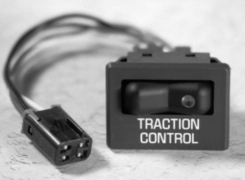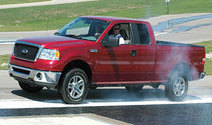
Automatic traction control has gone from being a high-end option to a feature that’s now included on even some base model vehicles. Car manufacturers use the technology and hardware of the automobiles anti-lock brakes to control the traction of the tires.
They also use the same technology in the implementation of vehicle stability control systems. The vehicle’s anti-lock brake system pumps the brakes when a wheel attempts to go into a locked condition. This same ABS system is at the heart of the automatic traction control system.
When a drive wheel is sensed as slipping against the road surface a brake caliper is activated to slow the wheel. They achieve this by comparing vehicle speed at the transmission and the speed of the other wheels. This is how the ATC knows which brake to apply to slow that wheel down.
Do you Need Traction Control

The system works really well and has its biggest advantage when one drive wheel is slipping and the other drive wheel still has good traction. In this situation one brake caliper can be pulsed to slow the wheel down.
These factory standard traction systems also work especially well when hard acceleration is needed on a slippery wet road. ATC is also very helpful on all wheel drive vehicles and 4×4. If one of these types of vehicles loses traction at one wheel this could hamper the drivers over all control.
Most traction systems will have separate electronic control modules to not only monitor the inputs but also to control the outputs of the system. During road operation, the traction system uses this module to monitor the wheel speed sensors.
Types of Factory Traction Systems
If a wheel enters a loss of traction scenario, such as 1 tire is wet while the others are dry, the computer applies braking force to the wheel that is spinning faster than the others.
Keep in mind that some vehicle manufacturers deploy different types of systems for anti-lock brakes, and ATC. Some of these control systems use separated hydraulic valve units and control modules for the ABS.
While other manufacturers will integrate both systems into one hydraulic control unit and a single control module. As you could imagine having the system together will hold down the manufacturing costs as well as adding a level of reliability.
For the most part these systems are very reliable as proven by car manufacturer reports on this subject. But on an integrated system if a hydraulic valve needed to be replaced I would imagine that this would be a very expensive car part on most vehicles.
Automatic traction control started out as a sales feature that was offered by dealerships as a safety advantage of their vehicle. The systems have been well received and found to be an extremely helpful aid in over all driving safety.
As these cutting edge technologies become more efficient and less expensive we will see more of them deployed on both expensive and low cost automobiles.
We may even see the day when they are standard equipment or required by the United States Department of transportation (D.O.T) on all vehicles. Just a few years back they did this with the dash mounted tire pressure warning light. Safety regulations are nice but they do push the price up.
In my opinion the integration of ABS and ATC is news worthy. See what else is making headlines on my page covering automotive news.
See Mark Gittelman’s Awards & ASE Certifications on Google+.
Wondering what else is covered on this website? The homepage provides a rundown of covered topics as well as information about the car mechanic that built it. Visit the Auto facts.org start page.
